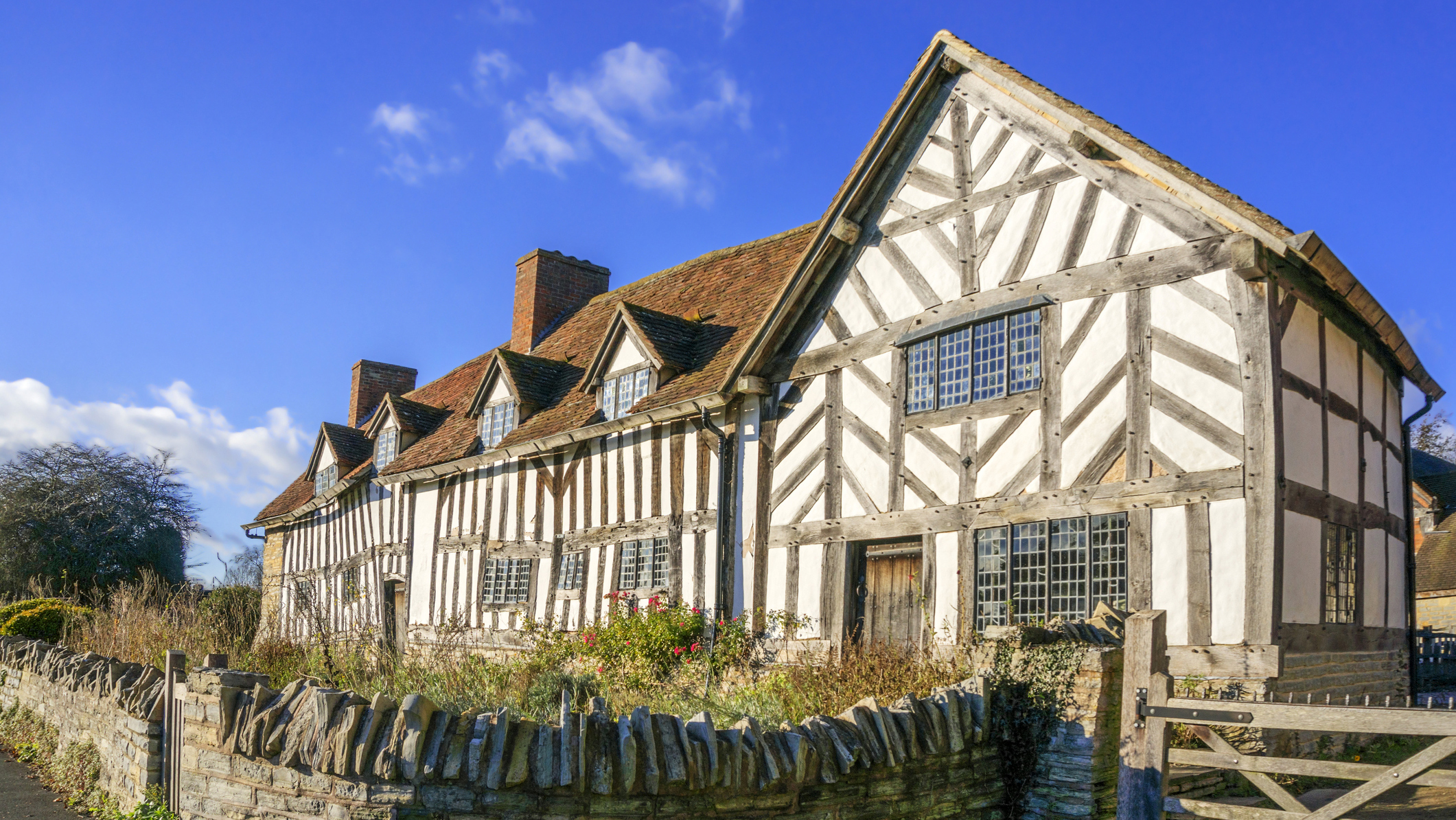
Old timber frame buildings and internal timber beams are often admired for their beauty and period character, but if not properly maintained and repaired, they are vulnerable to decay and damage. This may spoil both their appearance and, more importantly, their ability to support the loads they were designed to carry.
Even where no timber is visible, it is likely to be present. Ancient timber frames may be hidden behind plasters and renders and, in many buildings, timber lintels are concealed in walls above windows and doors.
When problems are suspected or repairs or alterations planned, you should seek the advice of a surveyor or structural engineer who has a good understanding of buildings of a similar age and type.
Use this guide to find out how to maintain and repair an old timber frame. And, if you're renovating a period property, check out our essential guide.
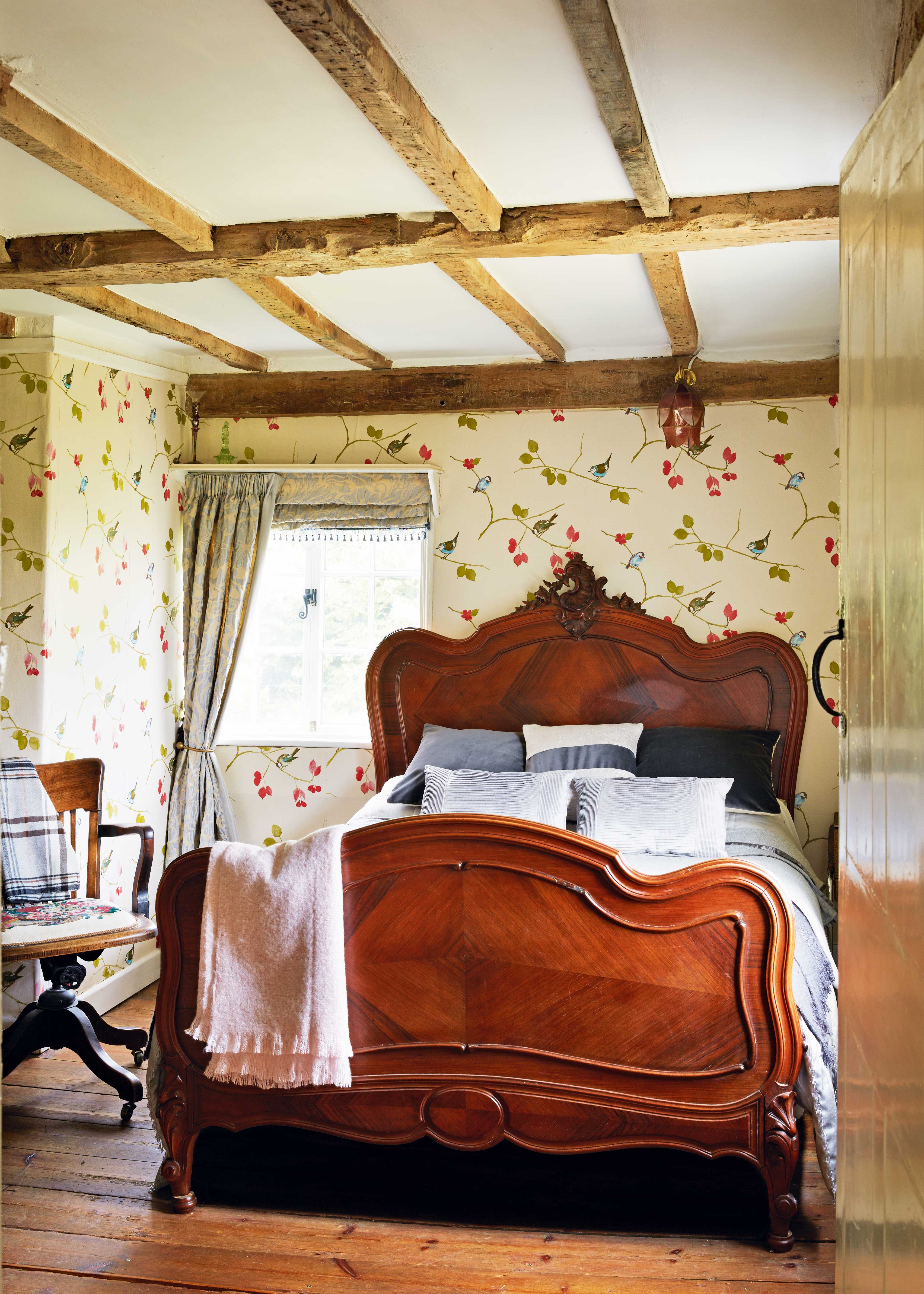
Exposed internal timber beams are a desirable original feature
Common problems with timber frames
- Dampness that may be causing timbers to rot.
- Signs of fungal attack.
- Signs of beetle infestation such as powder or ‘frass’.
- Structural failure in lintels above doors and windows.
- Movement in timber frames and failing joints.
- Sagging beams that might be overloaded.
- Timbers that have been cut through during alterations.
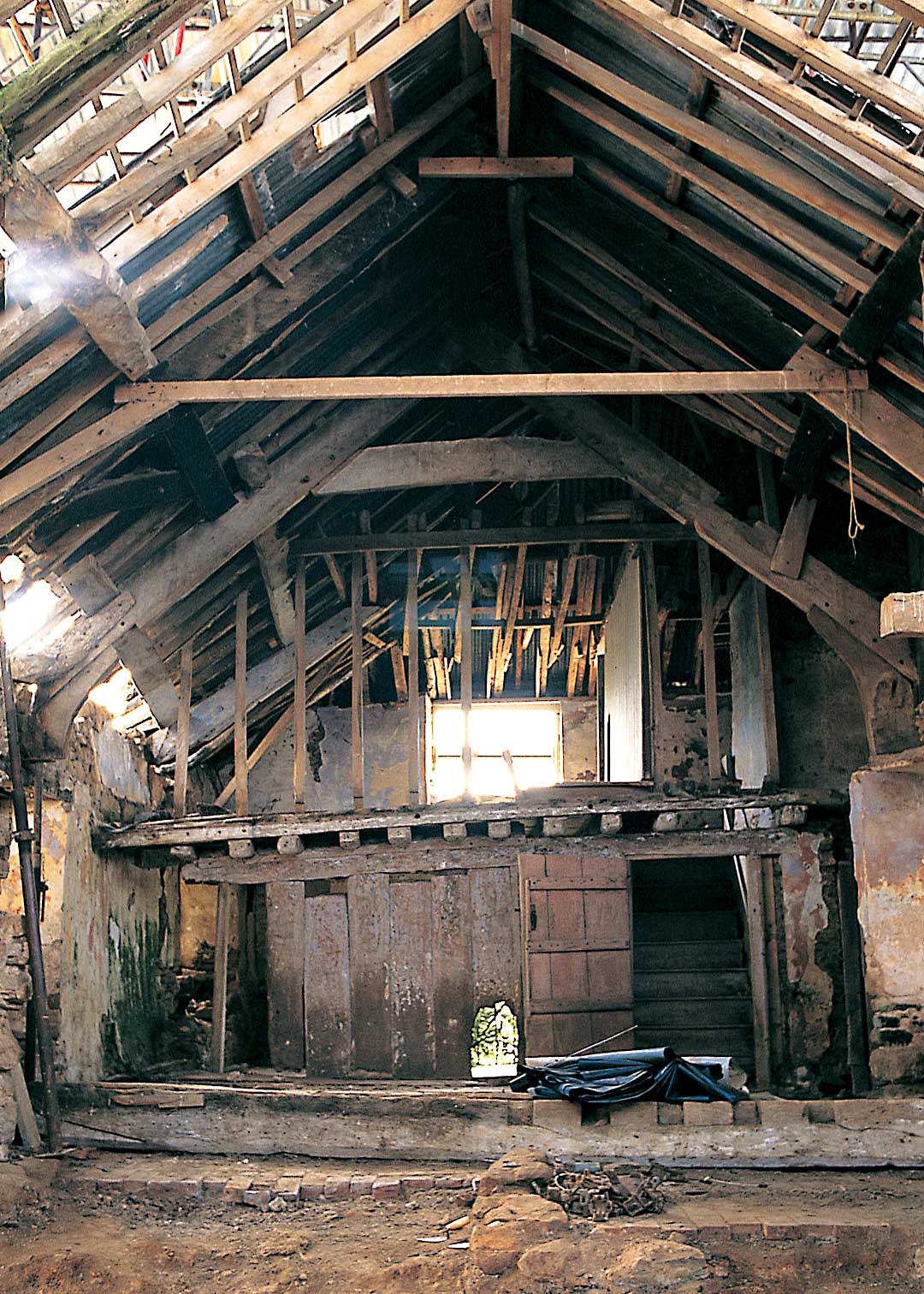
This timber frame building is undergoing major repairs
Checking timber frames for damage
Decayed timber
Decay is the biggest enemy of timber and results from moisture, which leads to rot and beetle infestation. Always try to identify the source of dampness, such as blocked gutters or downpipes, inappropriate external cement renders or high ground levels. Deal with these issues rather than just tackling the symptoms.
Use our guide to find out how to repair and replace old timber beams.
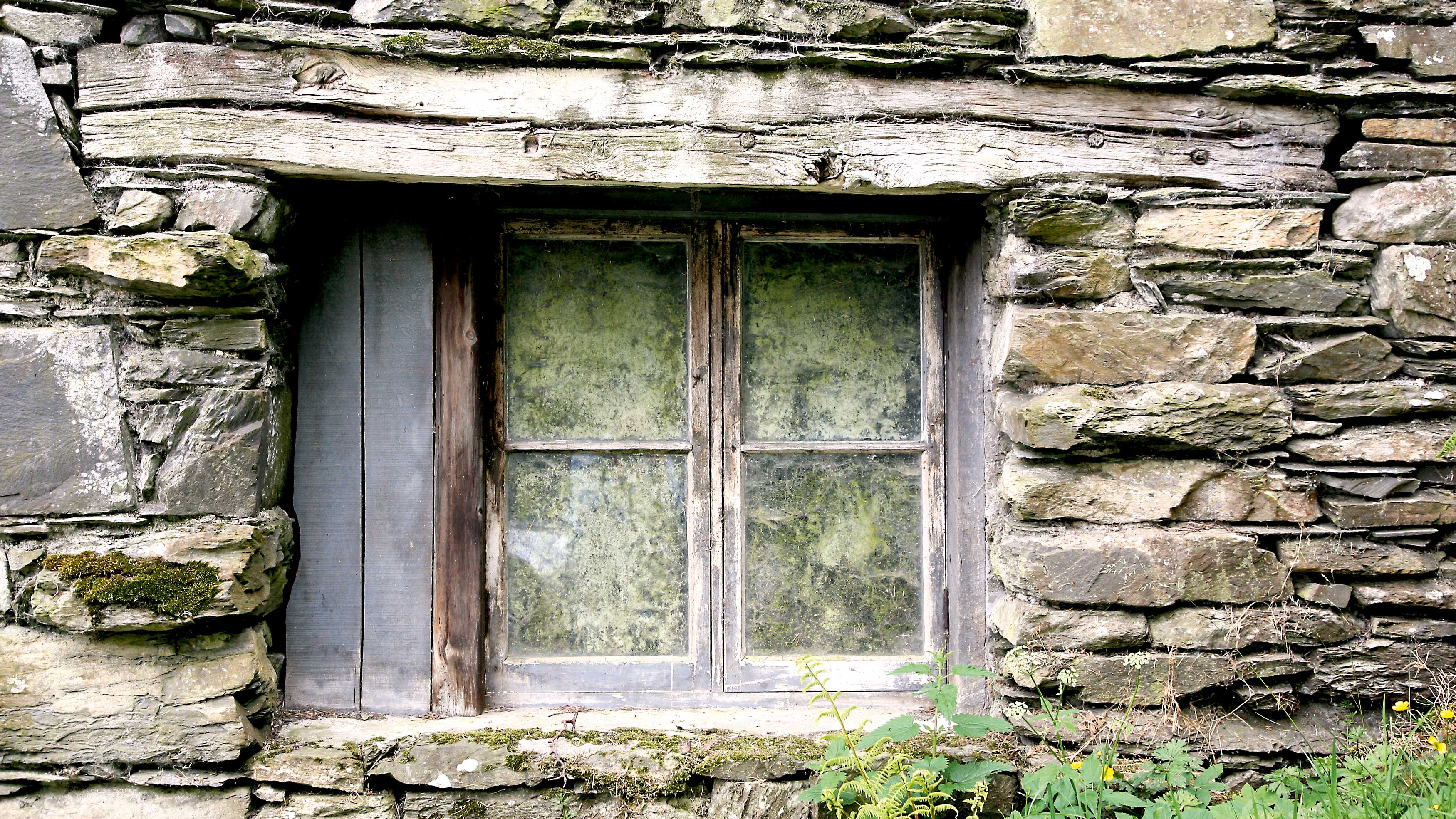
Timber lintels are common in many old buildings and may show signs of decay from moisture
Action:
- Test timber by prodding with a penknife – sound timber will resist penetration.
- Trace the source of moisture and rectify the problem.
- Always deal with the cause not the symptoms.
- Ensure the timber is allowed to dry out. Chemical treatment is generally unnecessary to dry timber.
- Monitor affected areas to ensure the issue has been rectified.
Beetle infestation
Signs of beetle attack are fairly common in old timber, although not necessarily a serious concern. In many cases the insects are no longer active so no action is required.
Active beetle infestation is often revealed by fine dust or ‘frass’ where the insects have emerged through ‘exit’ holes.
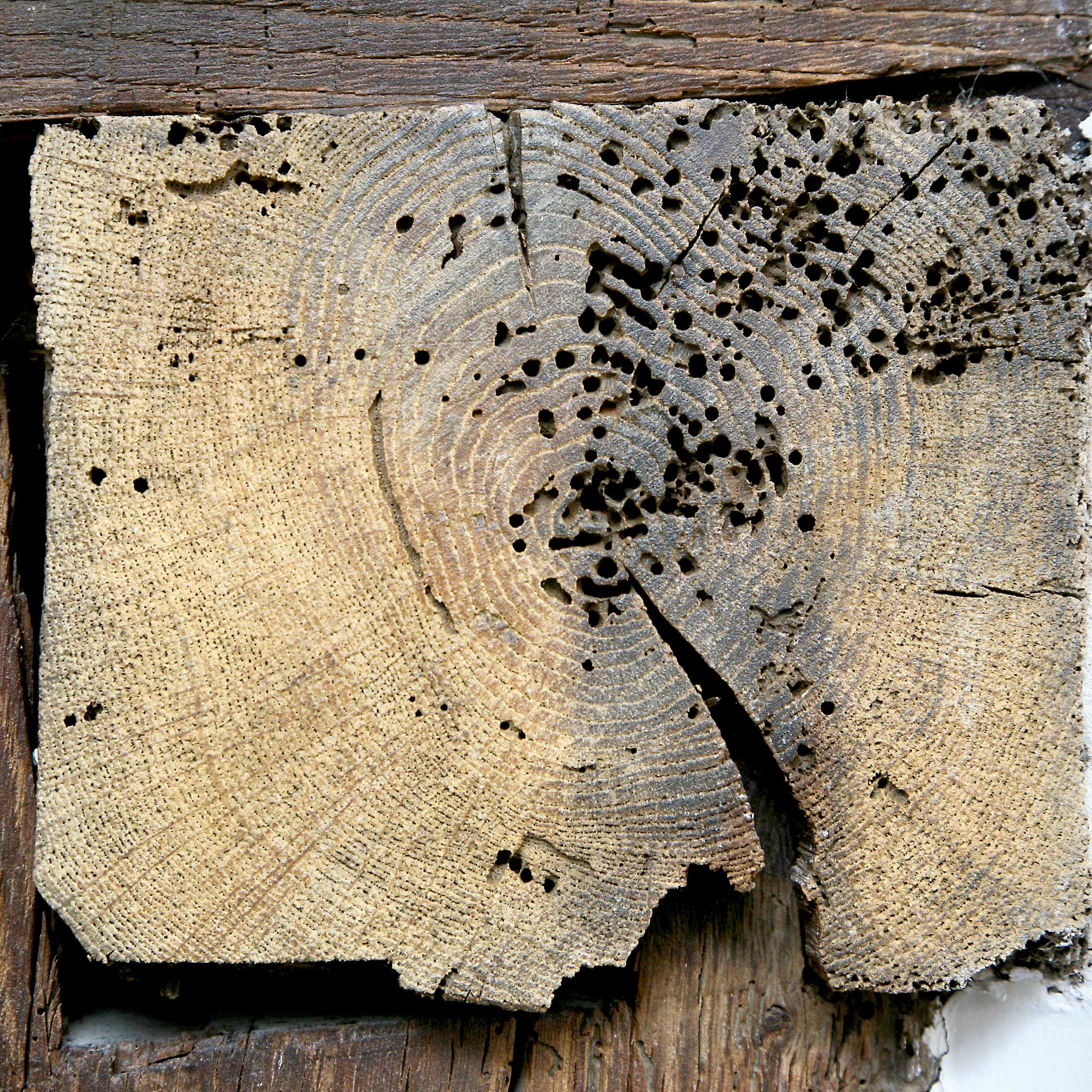
Damage to timber beam caused by beetle infestation
Action:
- Check the exit holes made by the beetles. If the walls are dark and dirty, the attack is likely to be historic. Clean, light-coloured holes are probably more recent.
- Look for fine dust or ‘frass’ where the insects have emerged through the holes as this may indicate an active infestation.
- If the timber is dry, chemical treatment should be unnecessary.
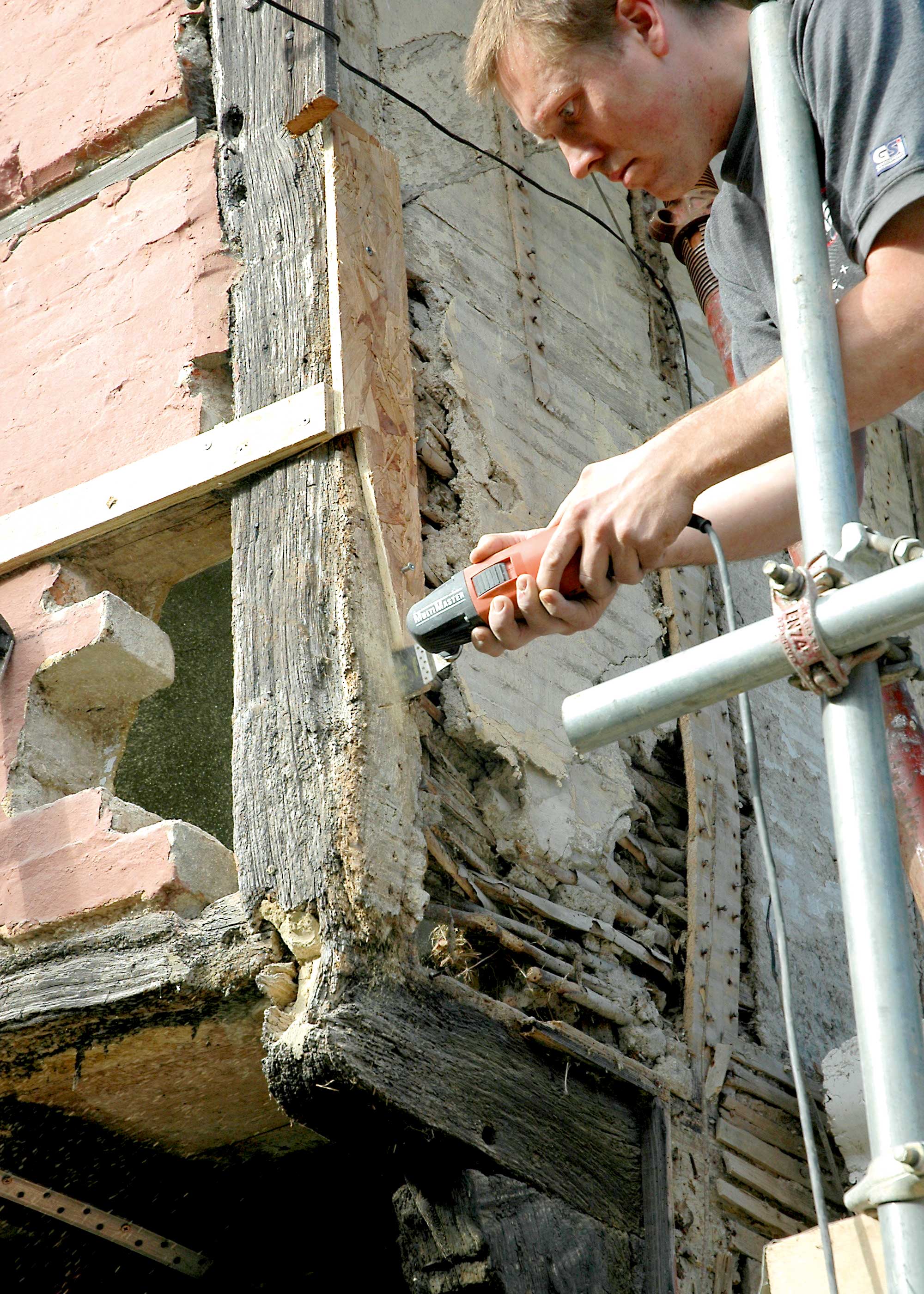
Making repairs to a timber frame building. Traditional wattle and daub can be seen between the timbers
How to repair damaged timber
Approach repairs with caution and consider the structural issues involved but never assume that timber needs replacing.
Medieval beams were frequently much larger than necessary so even where there is some loss through decay or timber infestation, the timber may still be capable of carrying the structural load.
Where damp problems exist, rafter feet and the ends of timbers built into brick or stonework often become saturated and rotten.
Wherever possible, avoid replacing timbers and instead make repairs so the least possible amount of original wood is lost.
One of the simplest, most cost-effective repair methods to rotten timbers is to use a metal strap. A strap can be made up by a local blacksmith and is simply bolted into place to hold decayed elements together. This has the benefit of being reversible and causing the least possible disturbance to the surrounding fabric of the building.
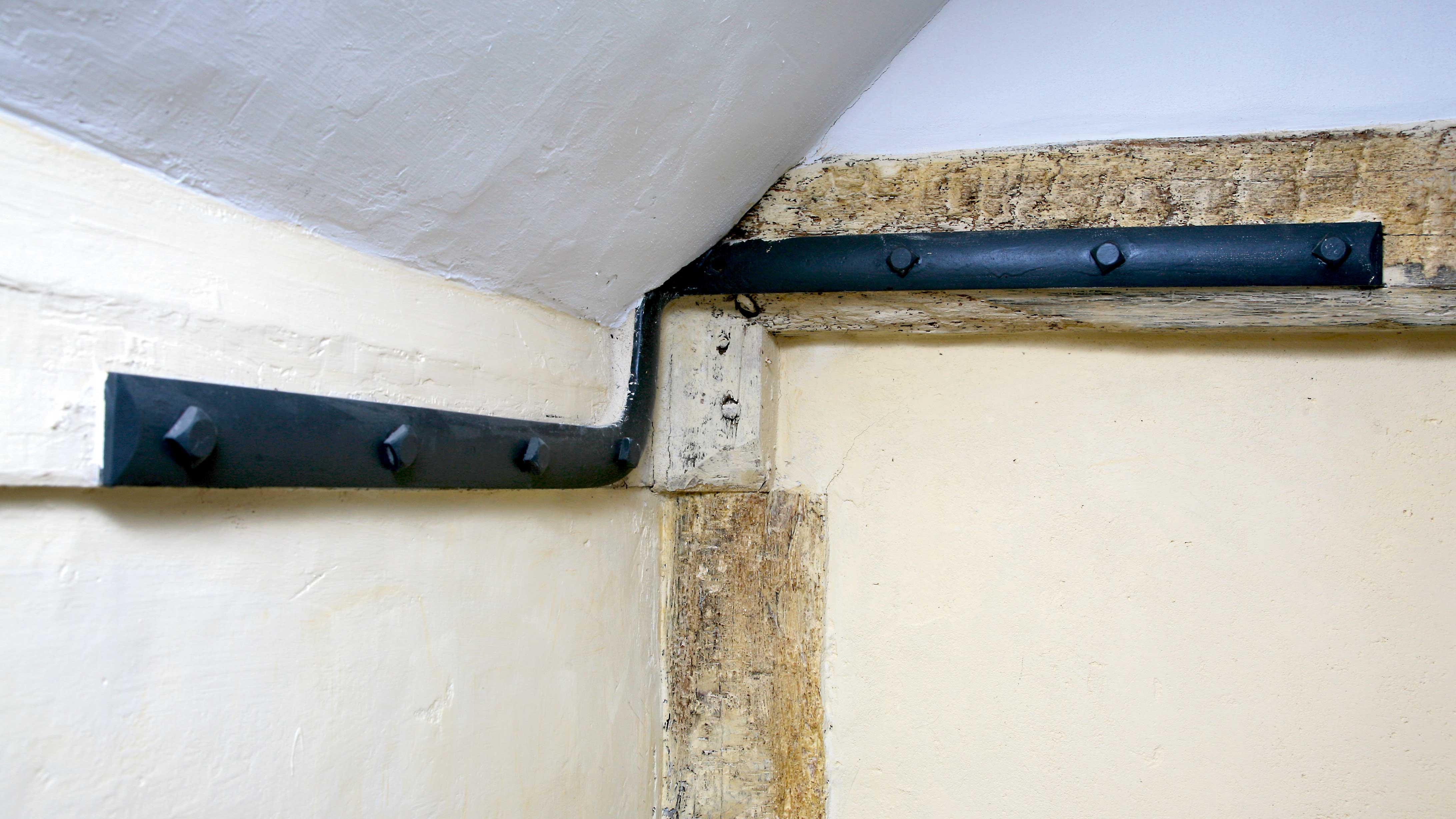
A hand-forged metal strap using a 'D' section bar is an honest, effective and reversible way of repairing a timber frame
Where it is necessary to cut out timber and make repairs, a good carpenter with an understanding of old buildings should be able to scarf in new sections using traditional jointing methods.
A major problem with timbers is that electricians and plumbers ‘notch’ into the top of joists in order to lay cables or pipes, dramatically weakening them. Where this has happened, joists can usually be strengthened with metal straps or by fitting additional joists alongside.
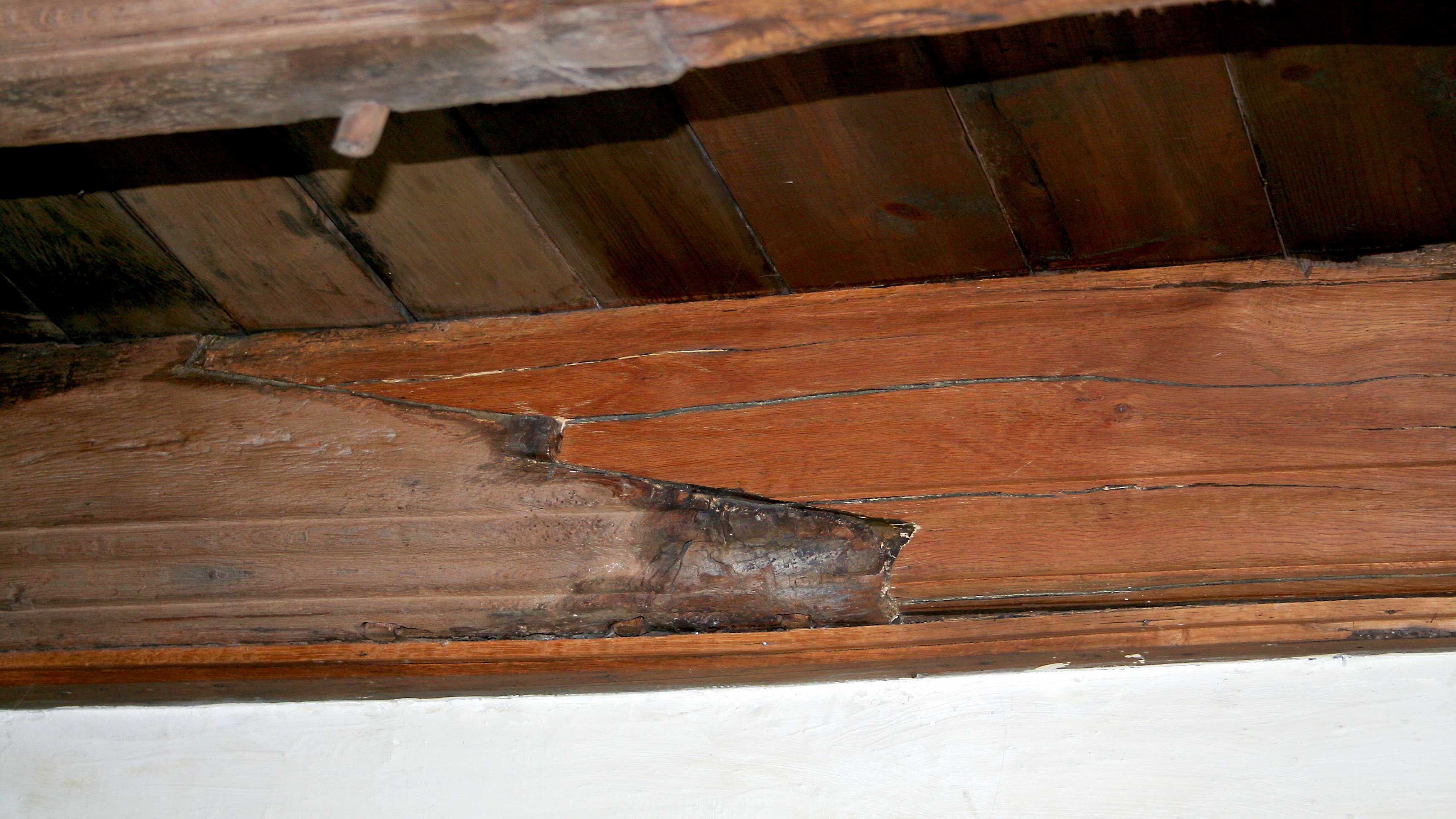
A scarf joint repair, where new wood has been introduced to shore up the existing timber
Minimising damage to timber frames
In the past, the structural integrity of timber was often assessed and tidied up by ‘defrassing’, which involves hacking off beetle-infested or rotten timber. This is a highly destructive process that radically alters its appearance and results in the loss of the original surface.
Where an assessment is required to ascertain the structural integrity of a beam, non-destructive techniques are now available. At its simplest, this involves drilling into the timber with a fine drill bit but specialist companies can undertake more accurate testing.
Bear in mind that timber treatment relying on the use of chemicals will only deal with the symptoms of the problem, not the cause. Chemical treatment is generally unnecessary if the source of the dampness has been removed and the timber has dried out because further decay will be limited if not halted completely.
Stripping paint from timber beams
Beams have frequently been painted in the past but think carefully before attempting to strip them. The work can be destructive and is invariably time consuming, labour intensive and may not produce the desired result. Avoid using abrasive methods, including wire brushes.
Tips for stripping paint:
- Protect surrounding areas.
- Test a small inconspicuous area first.
- Apply chemical paint removers and scrape away paint. Avoid digging into the timber.
- Use peel away poultice systems to remove multiple paint layers.
- Hot air guns may be effective, but be aware of the risk of fire. Never use a blow torch.
- Never shot blast or sand beams as this is likely to destroy the surface of the timber as well as its original shape and texture.
- If very dark, consider lightening beams with traditional casein distemper.
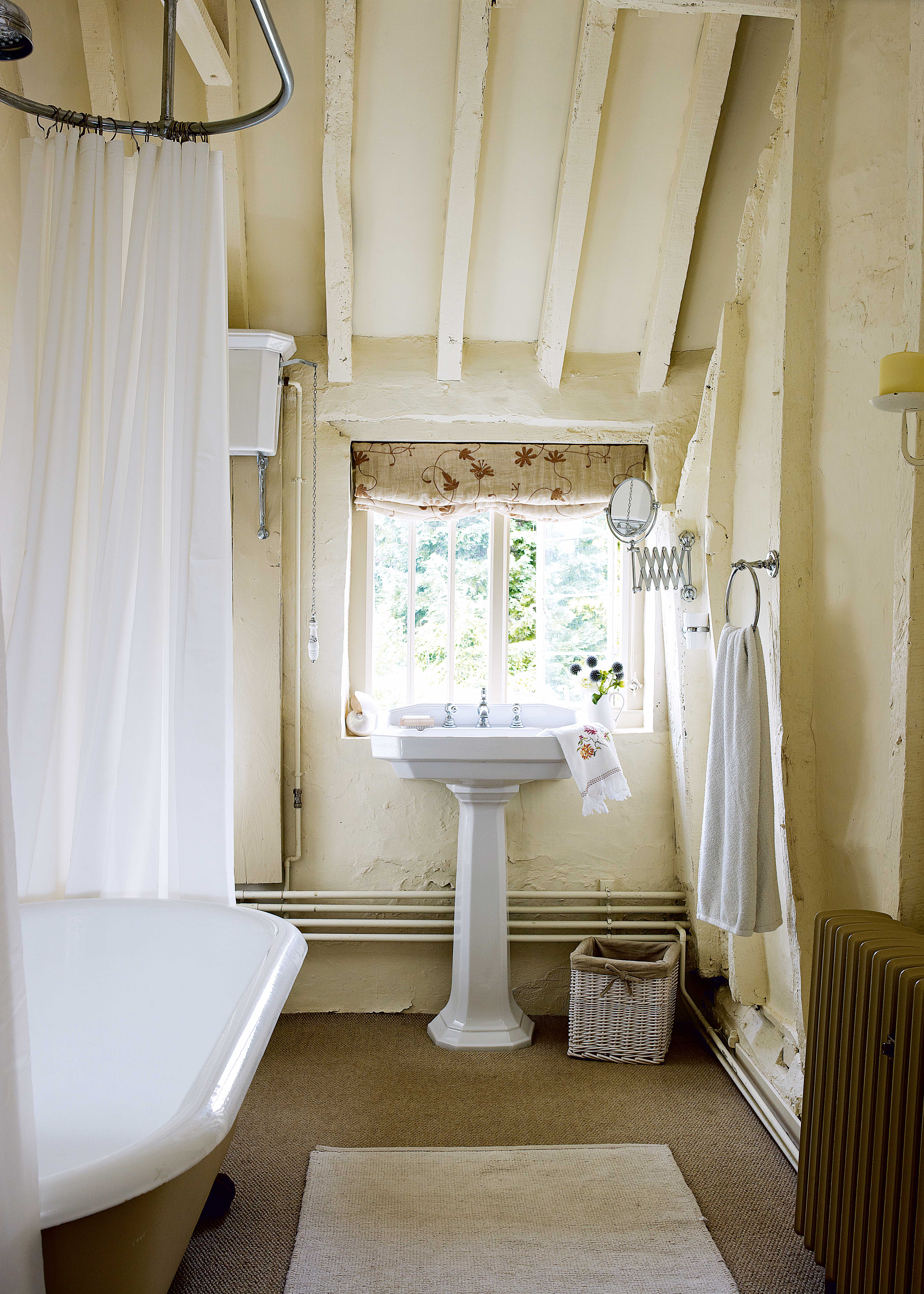
Where timber beams have been painted, it may be possible to remove it, but consider carefully as it is a laborious task that may not yield the desired results
Cleaning timber frames
Beams can look ‘tired’ but remember, generally they have aged over many hundreds of years so have an attractive surface patina that is quickly lost by over-zealous cleaning or stripping.
Tips for cleaning beams:
- Remove dirt and dust gently with a soft brush, damp cloth or vacuum cleaner, using the soft brush attachment.
- If a light sheen is desired, apply a thin coat of beeswax polish.
- Avoid using linseed oil as it stays tacky, attracting dirt.
- Rather than staining new timber, let it darken and colour naturally so that it blends in.
More on restoring period homes:
Join our newsletter
Get small space home decor ideas, celeb inspiration, DIY tips and more, straight to your inbox!
-
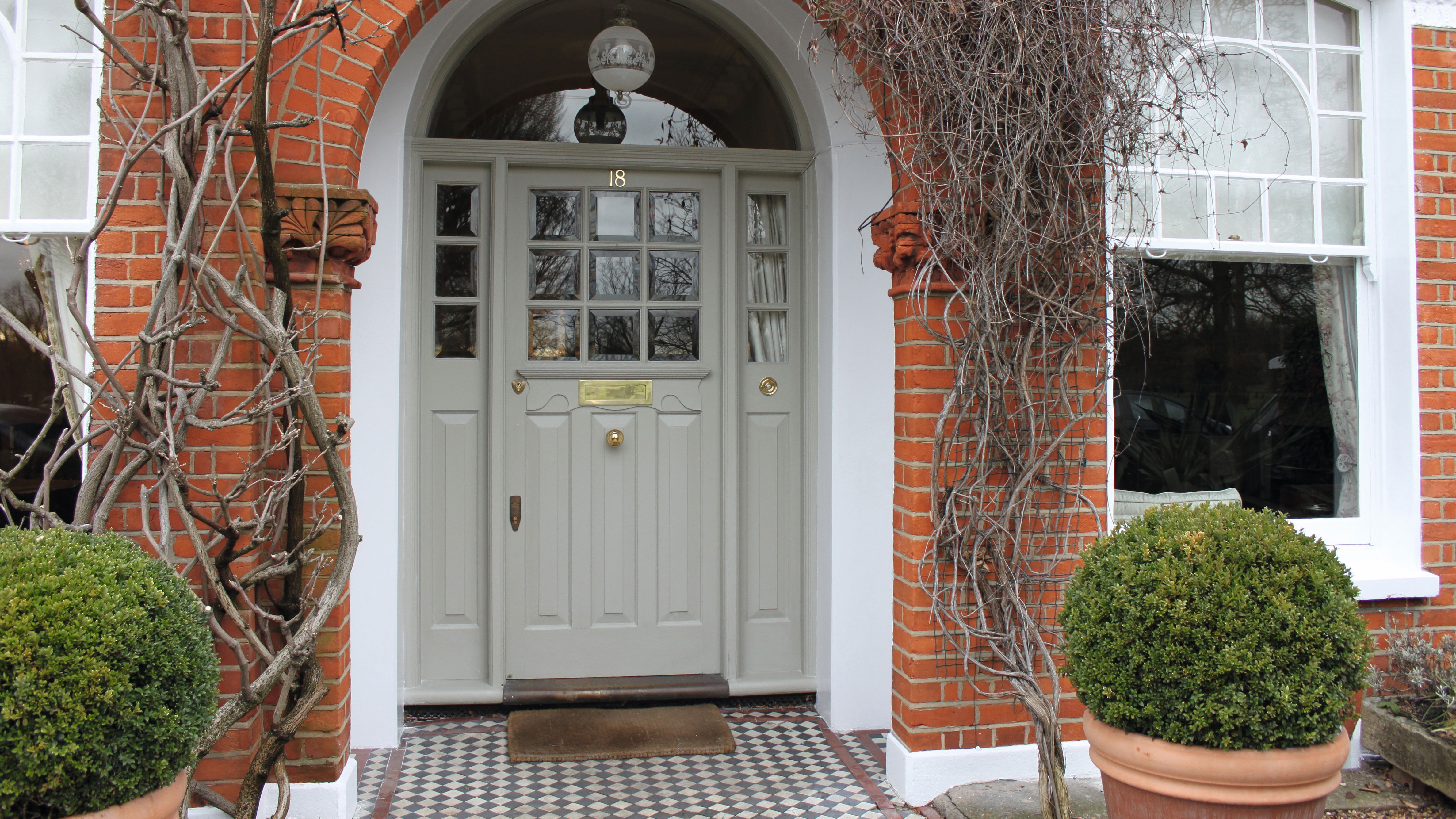 How to restore a front door – refinish old or weather-beaten hardwood
How to restore a front door – refinish old or weather-beaten hardwoodFront door restoration is key to keep your hardwood entry door looking its finest. Clean up and refinish yours properly.
By Helaine Clare Published
-
 How to render walls: a beginner's guide to rendering
How to render walls: a beginner's guide to renderingFind out how to render walls (or how much it costs to get someone else to) in our easy guide by DIY and renovation expert Michael Holmes
By Michael Holmes Last updated
-
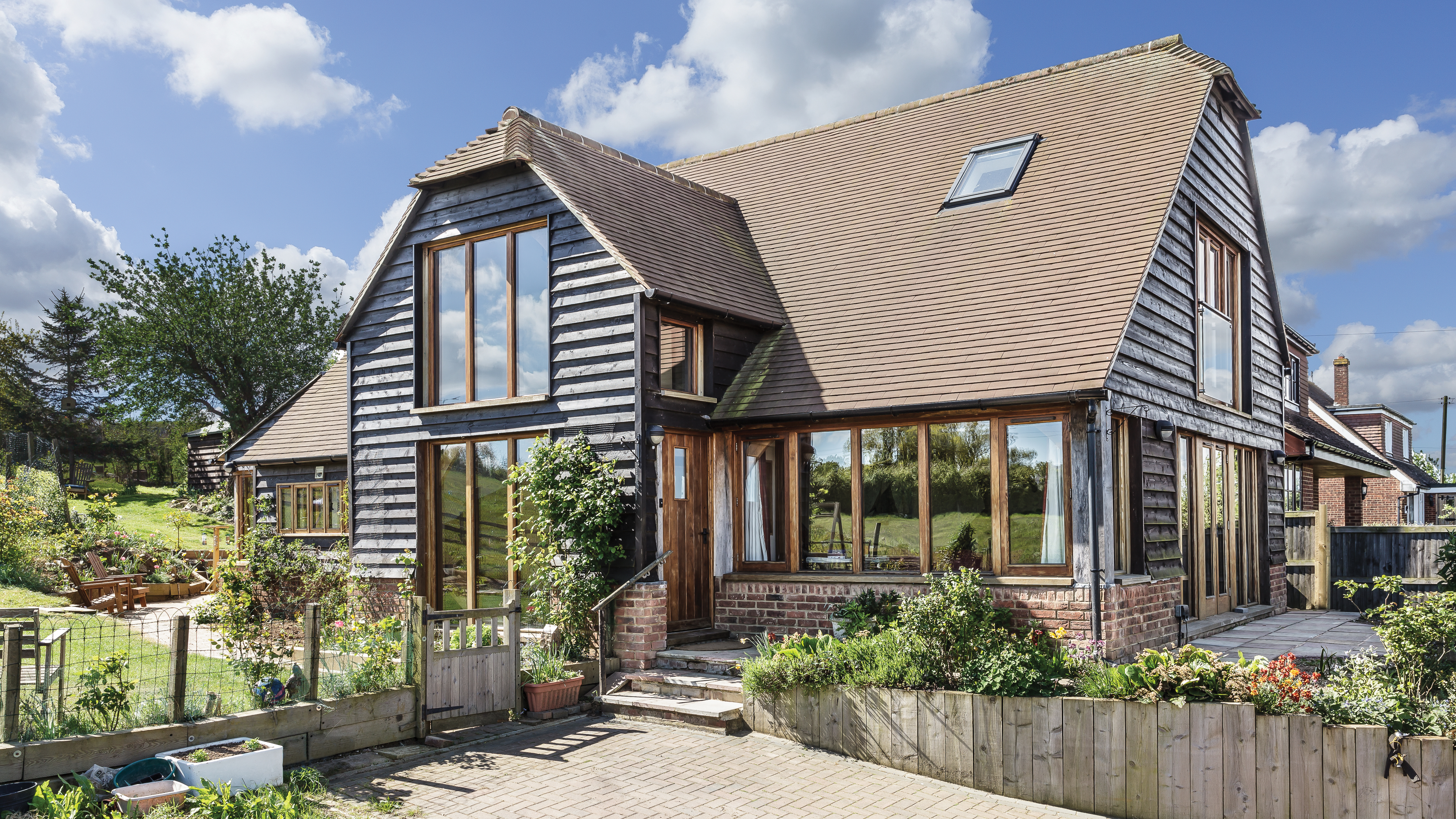 Cladding and render: the ultimate guide to exterior finishes for your home
Cladding and render: the ultimate guide to exterior finishes for your homeTransforming your home's exterior? New cladding and render or paint in the latest finishes will modernise it and add a practical weatherproofing guard
By Lucy Searle Last updated
-
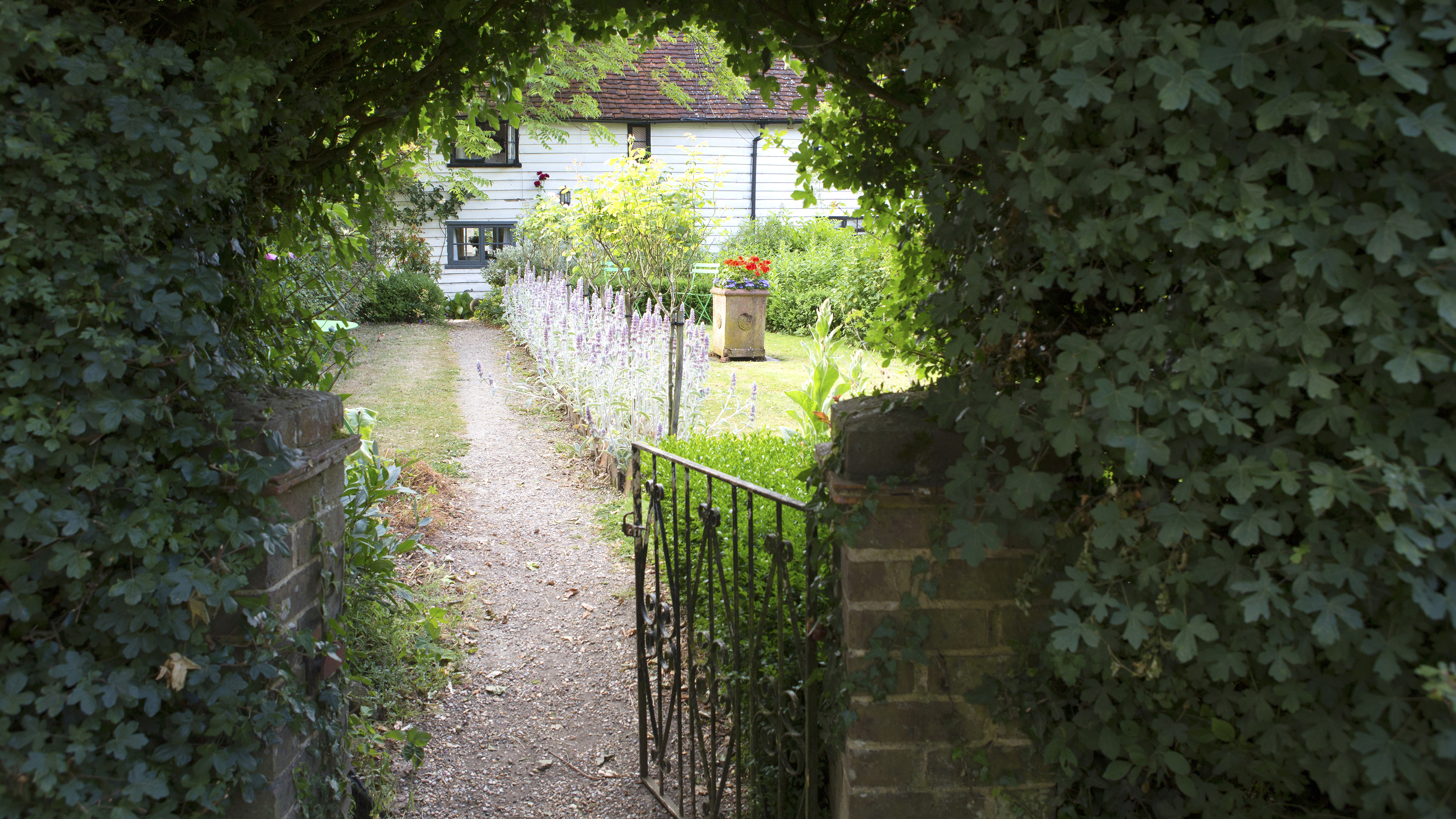 How to paint metal railings: cleaning and repairing railings and gates
How to paint metal railings: cleaning and repairing railings and gatesOld metal railings and other exterior metalwork needs regular care and attention to prevent decay, so spot the signs of wear and tear and know what action to take with this practical, step-by-step guide
By Helaine Clare Last updated
-
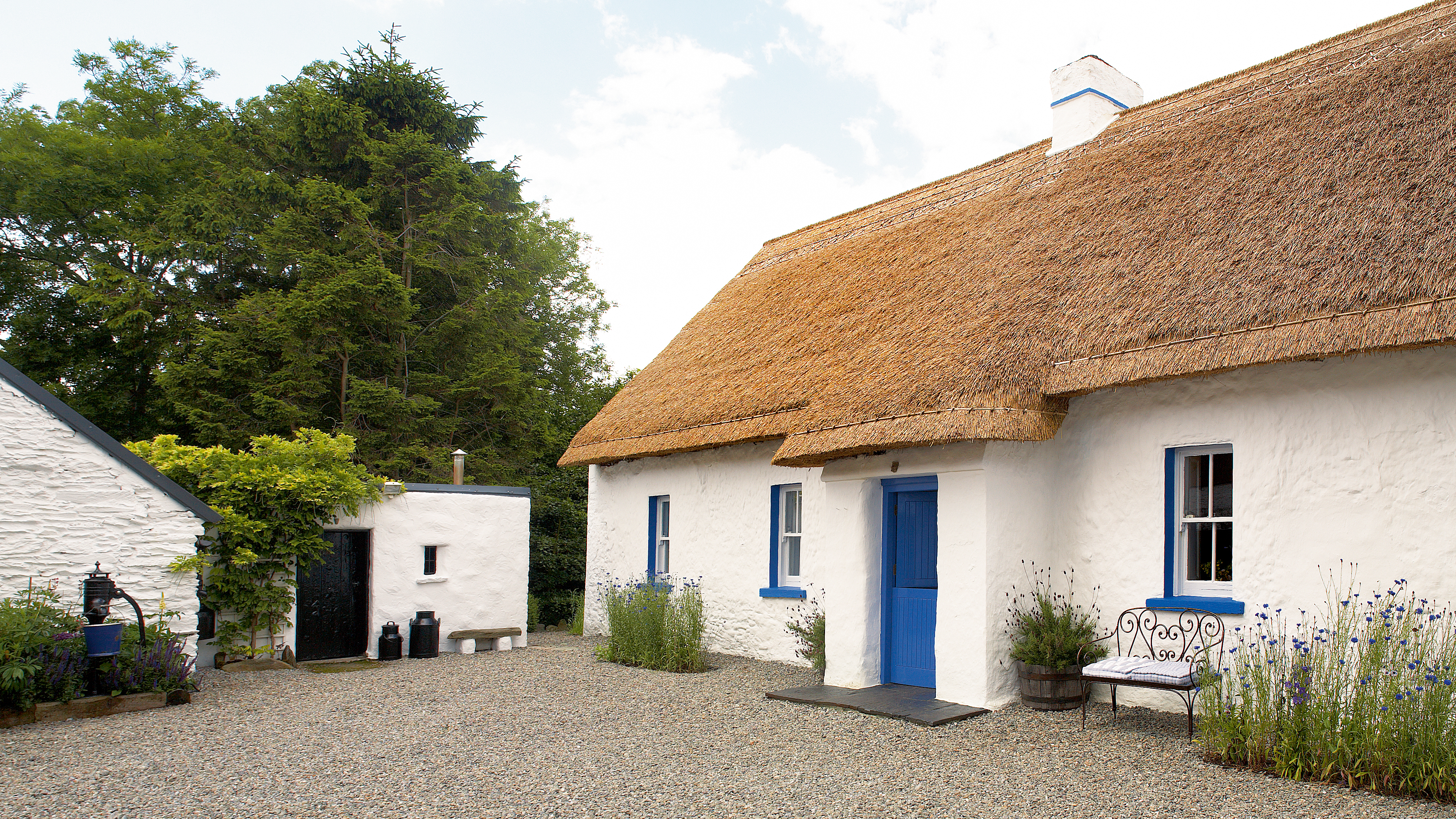 Lime mortar, plaster and wash: how to use it to repair and maintain your period home's exterior
Lime mortar, plaster and wash: how to use it to repair and maintain your period home's exteriorLime is the key to healthy period homes, whether in the form of mortar, plaster or wash. Roger Hunt explores lime’s history as a building material and assesses the benefits it brings to old houses
By Roger Hunt Published
-
 How to repaint and revive outdoor woodwork
How to repaint and revive outdoor woodworkIn this step-by-step guide, DIY expert Helaine Clare shows how to repaint and revive outdoor woodwork
By Helaine Clare Published
-
 How to maintain and repair leaded windows
How to maintain and repair leaded windowsOriginal leaded light windows are historically important architectural features, so when they need attention it's essential to repair and care for them correctly
By Douglas Kent Published
-
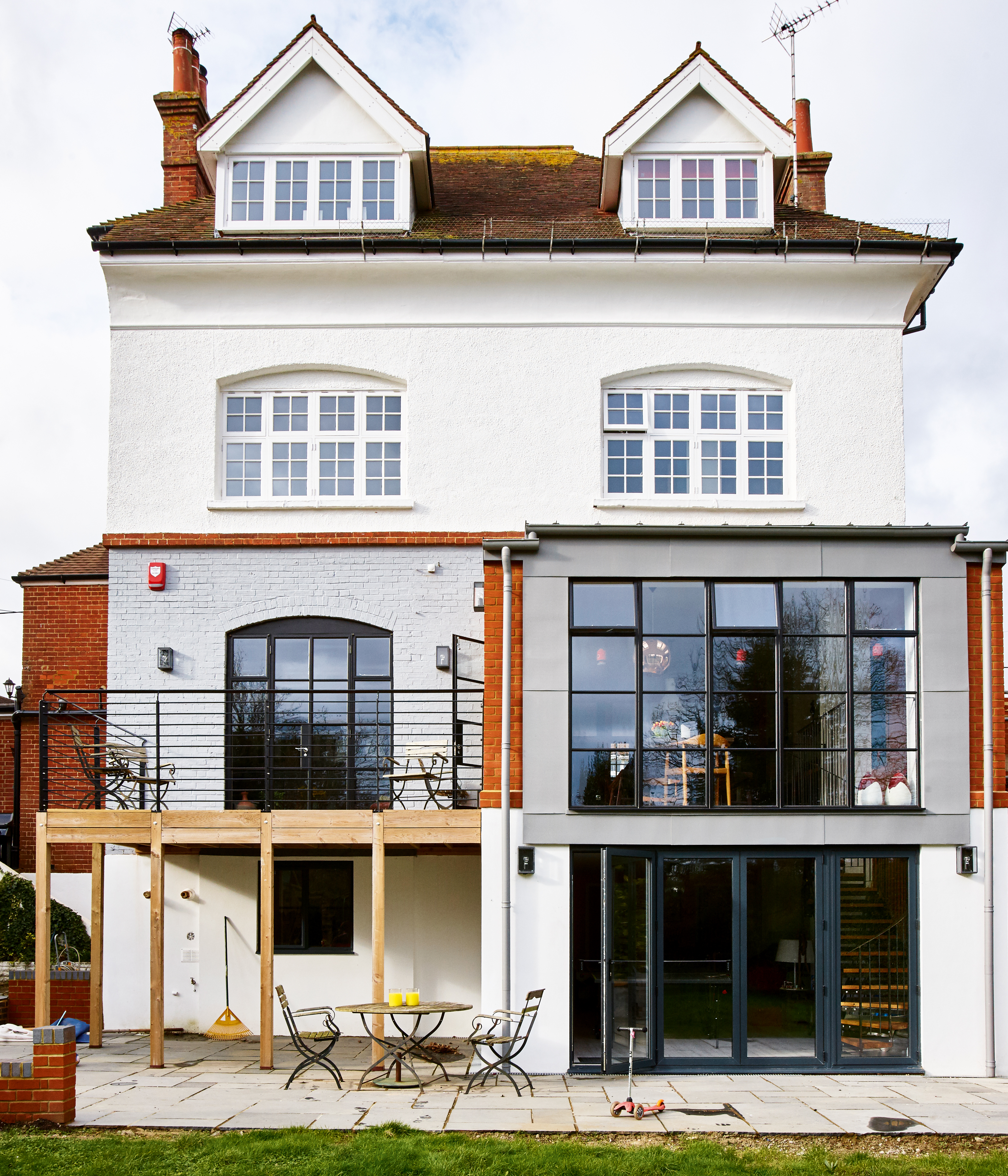 How to repair and maintain metal window and door frames
How to repair and maintain metal window and door framesProperly maintained, metal windows can last for centuries. When protective coatings are neglected, however, corrosion may occur. Here's how to repair your metal door and window frames
By Douglas Kent Published